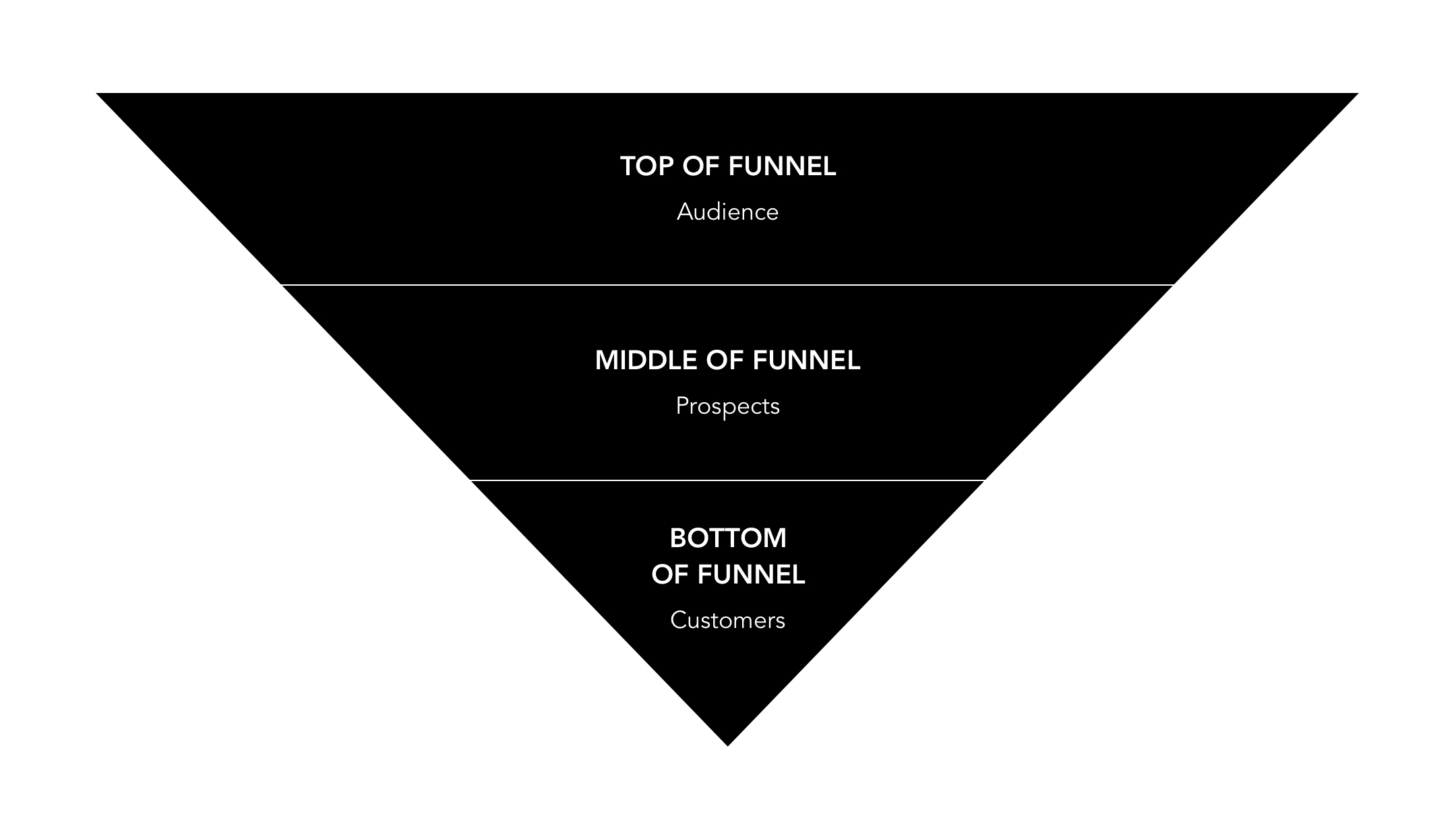
Shaking hands, handing out business cards, making phone calls and arranging appointments - not only does this sound tedious, it's also outdated. The digital revolution has made customer acquisition much easier. To reach prospects and turn them into customers, businesses today use a sales funnel.
In addition to the term sales funnel, the terms marketing funnel, conversion funnel, or simply funnel are often used. Basically, they all mean the same thing.
The sales funnel represents the journey of a potential customer from the first contact to the completion of the purchase. The individual steps of the sales process are measured and evaluated using concrete figures. The sales funnel enables marketing and sales to use their resources in a targeted and efficient manner.
At the top of funnel (ToFu), there is a large audience of potential customers. Not all of these people will buy your product or service; some are not interested in buying, some do not have the budget, and some choose the competition. As a result, more and more of these unspecified prospects jump out in the middle of funnel (MoFu), leaving only the specific group of customers at the bottom of the funnel (BoFu).

The sales funnel is based on the AIDA model, which describes the effect of advertising on the customer.
The formula stands fo
There are sales funnels described with up to seven steps. But since they're all based on the AIDA formula, we'll focus on the essentials here.
A detailed analysis of your sales funnel can give you insight into your sales chain. Beware of the misconception that you cannot lose prospects in the process. The funnel is a valuable filter that allows you to focus on your true target audience.
Still, you want the best possible end result. To ensure that you are only losing unqualified prospects and not customers, you should measure your success rate on a regular basis. This can be calculated with a simple formula:
In general, a conversion rate (CR) between 1 and 5 percent is considered good. This means that you need at least 10,000 audience contacts to convert 5 customers. Of course, this is only a rough guide and varies from industry to industry. The important thing is to keep an eye on your own rate and improve it constantly.
To increase your success rate, look at each step and its conversion rate: Which ones are low? Which are the most effective? How can they be optimized?
Our conversion improvement tips can help.
Define your audience as clearly as possible. Only then can you provide relevant content and distribute it through the appropriate channel.
Don't forget the call to action: Without a specific call to action (CTA), you won't get any contact information.
Offer more information with added value. Only new insights will keep the prospect interested.
Look at the competition and try to beat them on price and/or service.
Many argue that the classic sales funnel is outdated: the path from prospect to customer has become wilder and less straightforward, not least due to increasing digitalization. To better illustrate this, experts have created new models in the form of an hourglass and a circle. McKinsey, for example, has developed the circular "Customer Decision Journey," but even here the lack of a customer perspective is often criticized. Focusing on the sales process from the seller's perspective seems too one-sided today, as it neglects the buyer's perspective.
Relationship is the key word: build a bond with your prospects. Even if they bounce back and forth between steps in their buying journey and do not accept your offer outright, this reduces the risk of losing them completely. Keep in touch with your existing customers and take advantage of the fact that you already know them and can convince them to buy again more easily than you can with a new customer.
If you need help using the sales funnel not as a hard and fast rule, but as a guide for your business, contact us: You can reach us by phone at +49 711 184 206-0 or by email at hello@wus.de.
Dagmar has been working in the industry for 15 years and is a big fan of clear communication. She has been writing and working for the W&S Digital Agency since 2020. If you want to get in touch with her, just contact her via d.kavakli@wus.de or LinkedIn.
